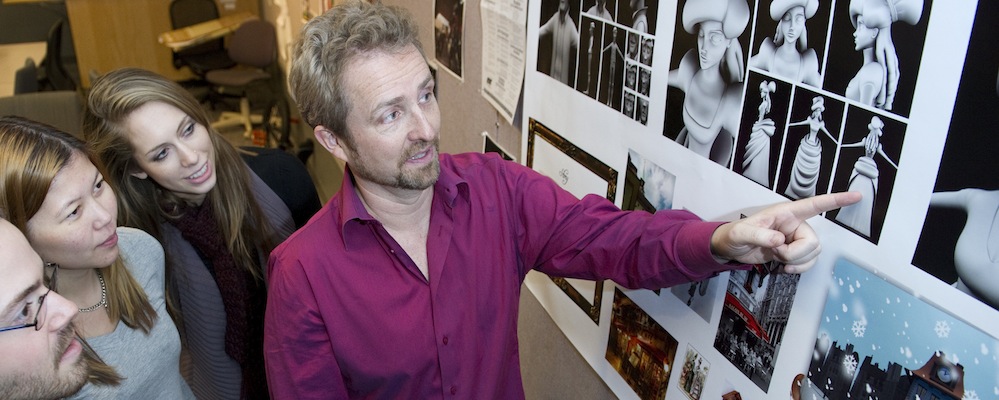3Qs: A scary time in cinema?

Around this time of year, movie theaters and television host horror movie specials and relive the classics. But have horror films lost their way? In honor of Halloween, we asked Terrence Masson, director of Creative Industries in Northeastern’s College of Arts, Media and Design, to examine how scary movies have evolved in recent years — and how to bring back the true fright factor.
Why are horror movies so appealing to filmmakers and fans?
For producers, they are some of the most inexpensive films to produce with a higher profit margin than other genres in the industry. For the audience, there is a long-standing visceral need for the good scare. One of the first moving images seen on film is of a train coming right at the camera, and it scared the audience right out of their seats because they had no idea what was going on and had never experienced the reality and fear of that view.
As long as there has been film, there has been the allure of a good scare, the cheap thrill. The attraction is that it is taking place in a safe environment (unlike say, skydiving) and knowing that what you’re seeing is not real.
Cinematically and psychologically, what is the difference between a horror film and a thriller?
I consider horror movies to be a sub-category of thrillers. A thriller has a wider definition, it is meant to excite the viewer and get them invested in the characters and film they are seeing. I think Hitchcock did this best in his films, encapsulating what makes a film distinctively thrilling. Increasingly today, horror movies have distinguished themselves further from thrillers for the amount of gore and violence.
In original horror films in the 1930s and 1940s, producers meant to scare the audience more with supernatural elements — it’s a more recent phenomenon, in the past 20 years, that horror films really started to become graphic and gory.
Some critics say horror films have become too violent in recent years. Is this true, and can other aspects aside from violence satisfy fans’ cravings for scary movies?
One of the greatest horror films, in my opinion, is the “Texas Chainsaw Massacre,” and in that defining film, the blood and gore is more implied through camera work and through the audience’s imagination. The horror and violence is not glorified.
Violence and gore wasn’t always expected in horror films, but it is now, partially due to an increased desensitizing of society. I think the industry may be too far into people’s expectations in this respect. Using visual effects is an easy way out. The hard part is getting that really terrific scare. The industry needs to realize that a lot of the blood and guts should be off camera.
Movies such as Alien and Jaws are horror films, works of classic film noir. In Alien, it’s the scary monster in the dark — the thrill and the fear lies in the unknown, as it does in Jaws, in which you don’t see the shark (since the mechanical shark malfunctioned and Spielberg was forced to improvise) for most of the film.
The classic horror movies were not just good horror movies, they were good films, great pieces of cinema — and that is why they have remained so timeless and popular.





